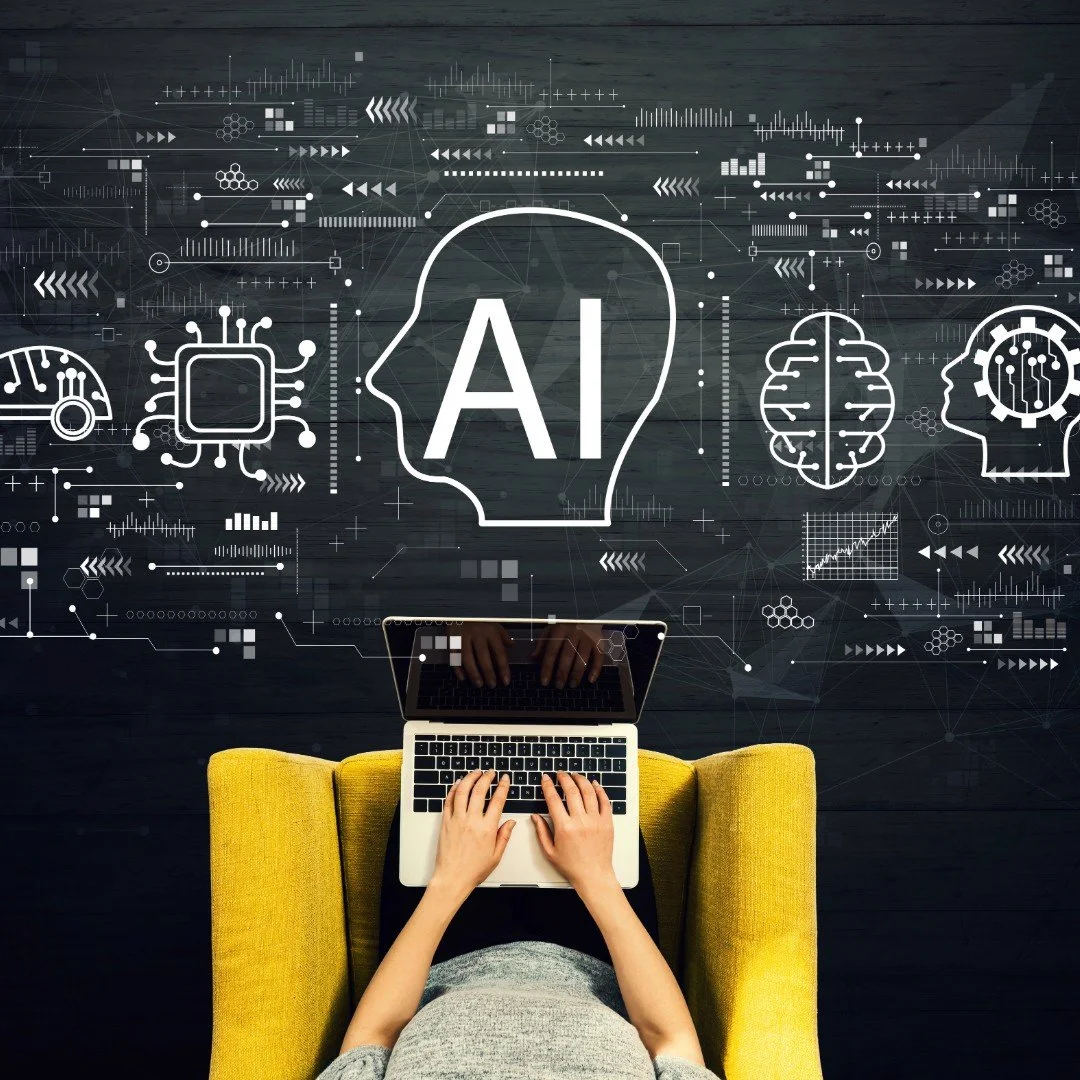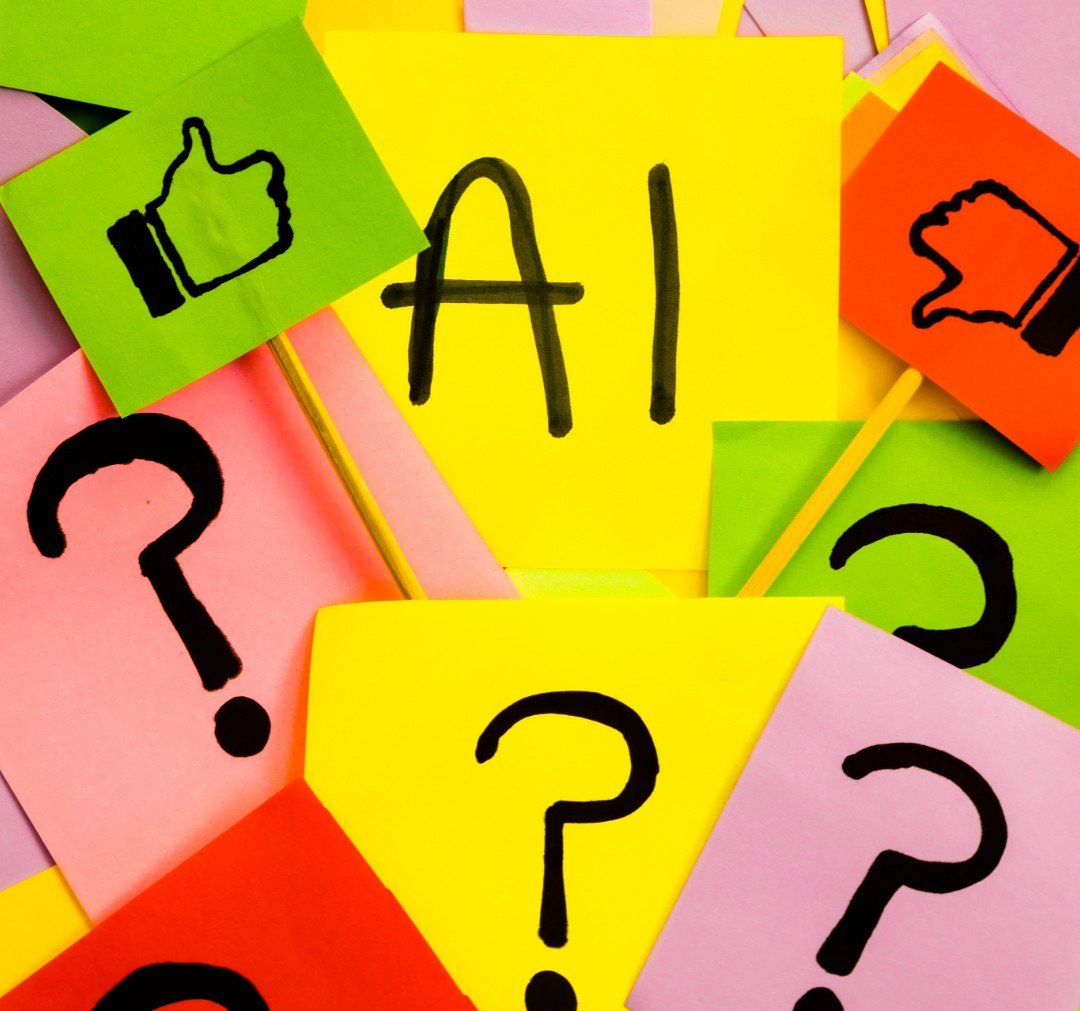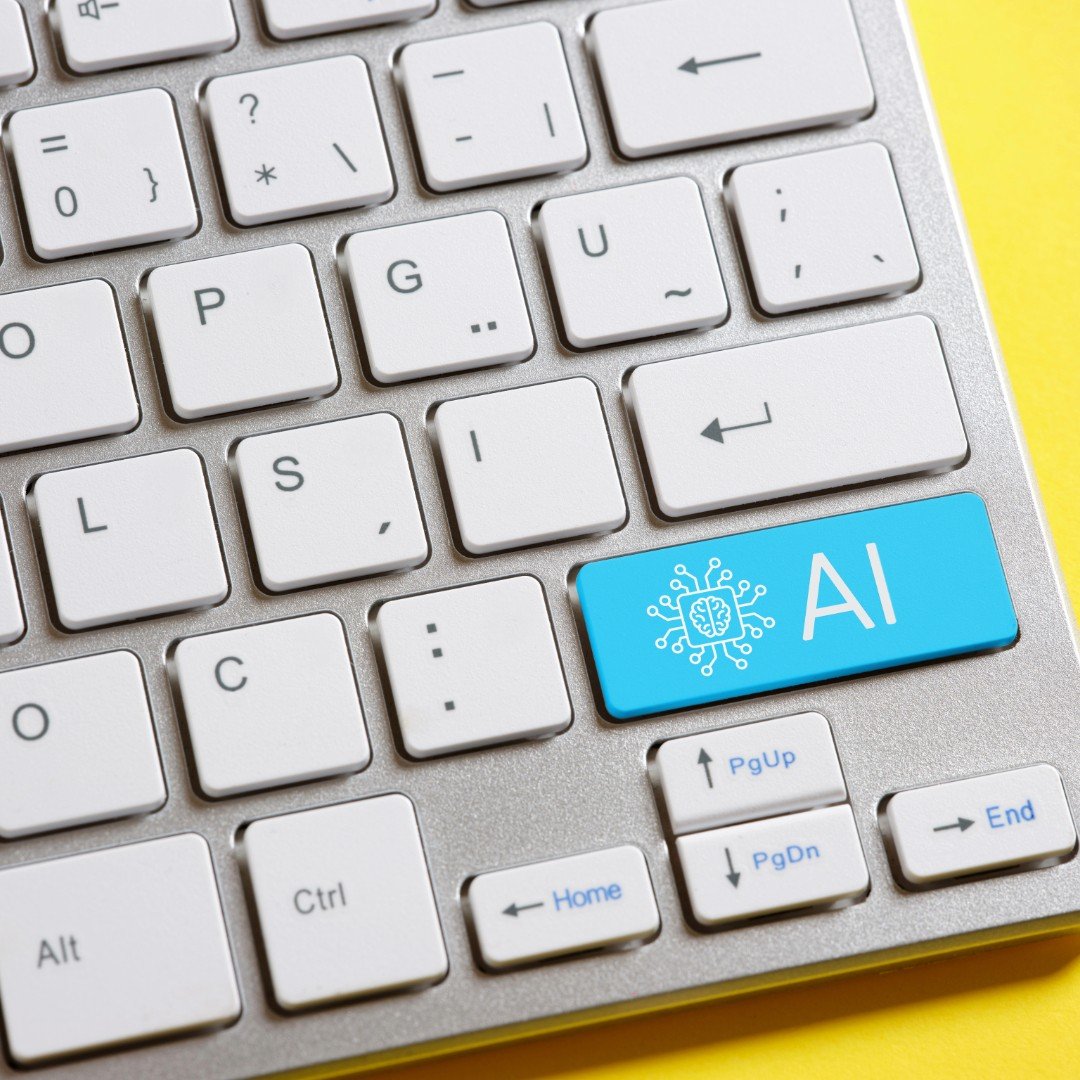
© 2025 by the Center for Endometriosis Care/Ken Sinervo MD, MSc, FRCSC. All rights reserved. No reproduction permitted without written permission. No external funding was utilized in the creation of this material. The Center for Endometriosis Care neither endorses nor has affiliation with any resources cited herein. The following material is for informational purposes only and does not constitute medical advice.
AI: A DIGITAL ALLY IN ENDOMETRIOSIS
RESEARCH, CARE & ADVOCACY?
WHAT IS ARTIFICIAL INTELLIGENCE?
Artificial Intelligence (AI) is the simulation of human intelligence in machines designed to think, learn, and adapt. It isn’t an idea based in some futuristic science fiction setting - AI is already a part of everyday life, powering everything from smartphone assistants to streaming recommendations. Spanning industries like healthcare, finance, and education, the platform is rapidly shaping how we live and work.
The formal study of AI began in 1956 at the Dartmouth Conference, where the term “Artificial Intelligence” was coined by Professor John McCarthy. Early systems focused on solving mathematical problems and playing games like chess. By the 1970s, expert systems begin bringing AI into business use. In the 21st century, advances in computing power, data, and machine learning have pushed AI to new heights from mastering complex games to enabling self-driving cars.
Key Areas of AI include…
Machine Learning (ML)
ML allows computers to learn from data and improve over time without being explicitly programmed. It’s how spam filters, recommendation engines, and fraud detection systems make accurate predictions.
Natural Language Processing (NLP)
NLP helps machines understand and generate human language. It powers translation tools, chatbots, and voice assistants, and continues to evolve toward a more human-like communication.
Computer Vision
This enables AI to interpret visual input, identifying objects, faces, or medical anomalies. It’s already being used in everything from facial recognition to autonomous vehicles and medical imaging.
Robotics
AI-driven robots perform tasks independently or with minimal input. From manufacturing lines to companion robots, robotics is transforming industries and human-machine interaction…think robotic-assisted surgery for endometriosis, particularly with systems like the da Vinci®.
AI in Healthcare
AI is transforming healthcare from analyzing scans to detect disease early to helping design new drugs. Virtual health assistants offer personalized support, and predictive tools help hospitals manage resources more efficiently.
Challenges & Ethics
Despite its promise, AI poses important challenges, including but not limited to:
· Bias: AI can reflect the biases in the data it learns from, leading to unfair decisions in hiring, policing, and finance. Inclusive datasets and oversight are key.
· Privacy: AI often requires large amounts of data, raising concerns about surveillance and misuse. Stronger regulations are needed to protect personal information.
· Job Displacement: Automation may replace some jobs. Preparing the workforce through education and training is essential.
It is also true that while ChatGPT may outperform in key communication areas, it must be used with caution and proper oversight, and the possibility exists for erroneous information to be provided by the platform. For example, one recent study (Beaulieu et al., 2025) compared ChatGPT’s medical responses to those written by physicians on the social platform Reddit. The researchers found that ChatGPT was rated significantly higher in medical coherence, clarity, and empathy, and the study experts preferred ChatGPT’s responses in over 63% of cases. This suggests that AI can offer high-quality, understandable, and compassionate answers, however - the study also revealed that 26.7% of ChatGPT's responses (and 60% of physician responses!) were flagged by at least one expert as “potentially dangerous.” These findings highlight both the promise and the risks of using AI in healthcare.
Looking Ahead
AI’s future holds incredible potential to revolutionize how we live, work, and solve complex global challenges, from advancing medical diagnostics to addressing patient care gaps. Of course, its development must be thoughtful, inclusive, and ethically grounded to prevent harm, reduce bias, and ensure equitable access. This means designing systems that reflect diverse perspectives, rigorously testing for unintended consequences, and embedding transparency and accountability at every stage. It also means involving voices from across disciplines - researchers, ethicists, policymakers, technologists, citizen scientists, advocates, patients, and the public – in order to best shape its trajectory. Collaboration across sectors will be vital to ensuring that AI benefits all communities, not just a privileged few.
A New Kind of Support
“Don’t confuse your Google search with my medical degree” is sometimes used to dismiss patients seeking information outside the exam room. But at our Center, we offer a different perspective: don’t confuse your degree with lived experience. Today, patients aren’t just Googling. They are increasingly turning to AI - and if even one person with endometriosis can find clarity and validation through a digital prompt, that’s a meaningful step forward in their journey.
In fact, many patients have shared that they first found our Center through ChatGPT while using AI to better understand symptoms and locate credible, specialized care like ours. Of course, AI is no replacement for personalized treatment, but it can be a valuable tool when used thoughtfully...which is why we encourage patients to engage with it in smart, safe, and informed ways.
While still an evolving field, AI is transforming medical research - and endometriosis is no exception. It is increasingly being used to deepen our understanding through data-driven insights, and Machine Learning algorithms are being applied to large-scale patient records, imaging data, and genomic profiles to help better identify potential diagnostic markers, predict disease severity, detect symptom patterns and more. AI holds significant potential to accelerate discovery, improve classification, and advance more precise, personalized approaches to endometriosis care and research.
The possibilities for AI in the art and science of endometriosis are endless - but patients can use the technology in their everyday lives, too.
As a complex and often misunderstood disease marked by diagnostic delays and inconsistent management, endometriosis presents an urgent need for improved patient-specific education and access to reliable information. By enhancing communication, facilitating informed decision-making, and delivering accessible, tailored responses to common questions ranging from symptom recognition to treatment pathways, AI has the potential to empower individuals with the disease. For example, one recent systematic review (Oliveira et al., 2024) explored how AI can support endometriosis patient education. The authors examined tools such as ChatGPT, Machine Learning algorithms, and Natural Language Processing for their ability to deliver disease-specific content and answer common questions. Their review found that large language models generally provided accurate and helpful information, underscoring their promise in meeting patient needs through digital platforms.
AI is not without its pitfalls and risks, of course, but the growing reliance on this technology by patients speaks volumes not only about its potential - but about the ongoing failures in access, communication, and trust within the healthcare system. That individuals are turning to AI for clarity and validation highlights a deeper truth: the system is still falling short in delivering accurate, patient-centered information and meaningfully addressing how endometriosis is understood, managed, and communicated.
Remember, however, AI can reflect biases and outdated information if not prompted carefully, and the computer is not your doctor. It can’t replace a medical evaluation. It doesn’t know your history. It can’t examine you, offer care or compassion, review your imaging, prescribe treatments, or perform surgery. Still, when used wisely, AI can help you feel more equipped to advocate for yourself.
So, how can you use AI as a tool in your endometriosis journey? Here are a few ways to use the technology safely and effectively.
To Learn More About the Disease
AI can help you better understand endometriosis, from symptoms and subtypes to treatment options and from daily management to navigating life with the disease. Use it to get clear, accessible explanations with sample prompts such as: “What kind of specialists are typically involved in multidisciplinary endometriosis care?” “What are symptoms of thoracic endometriosis?” “Can you help me draft a letter for my employer explaining why I need accommodations?” “Can you explain why some providers rely on hormonal suppression for endometriosis and what alternatives exist?” Request citations to ensure answers are evidence-based. If a response feels off, ask it to try again or clarify your intent.
To Help Prepare for Appointments
AI can help you prepare for appointments by refining the questions you want to ask. For example: “What should I ask my doctor about recurring pain?” “What’s the difference between ablation and excision for endometriosis?” “What are the pros and cons of hormonal suppression?" AI can offer you answers in plain language. Of course, you'll decide with your care team what’s right for you, but the technology can help make conversations with your doctor more productive and help you feel better informed.
To Clarify Jargon & Improve Health Literacy
AI can break down complex, confusing and technical language often found in imaging reports, surgical summaries, office notes, and research papers into results that are easier to understand. For example, terms like “posterior cul-de-sac obliteration,” “rectovaginal nodules,” or “deeply infiltrating endometriosis” can feel overwhelming when you’re reading your own records. AI can provide plain-language explanations to help you better follow up with your physician.
To Help Navigate Insurance
Chapt GPT can’t make calls or submit forms for you, but it can help you get organized. Try prompts like: “Help me draft an appeal letter for an insurance denial of excision surgery for endometriosis” "How do I explain that hormonal suppression has failed, and surgery is medically necessary?” You can tailor the language, then review the documents with your provider before submission. AI can also help clarify insurance language, which is often vague or confusing. You can ask questions such as - "What does ‘experimental or investigational’ mean in an insurance denial?” “What does ‘not medically necessary’ mean and how do I appeal it?” Remember, AI is a support tool, not a legal or medical authority - but it can assist with helping you feel more prepared in dealing with your insurance company.
To Help Prepare for Procedures
You can query what to expect before and after your procedures or surgeries, how to best prepare, what to ask your doctor and more. You can even use it to better understand what different procedures might specifically entail. For example, you can ask: “How can I best prepare for my pre-op appointment?” “What is an oophorectomy?” "How long should I expect to take off work or school after surgery?" "What should I pack for the hospital?" ALWAYS follow your doctor’s advice and instructions. AI can support your preparation, but your care team guides your plan. Of course, we can help on this front, too - we’ve got you covered with what to ask your doctor.
To Debunk Headlines & Social Media Myths/Misinformation
Not sure if what you’re seeing online is accurate? There’s a lot of misinformation out there, including from organizations, the media and medical practitioners. AI can help you critically assess headlines, social media claims, and trending health advice. By helping to summarize research, clarify limitations, and explain what a study actually says versus what’s being claimed in the media, AI can be useful in empowering you to feel more informed and less misled in a digital world full of noise. You can ask questions like: “Does endometriosis really go away after menopause?” "Is this so-called 'new drug' really novel - or is it just old news with fresh marketing?" "Can I really trust what they're saying about this non-invasive diagnostic test?" “Is this TikTok claim about diet and endometriosis backed by science?” Not everything you read online is truthful, especially when it comes to endometriosis. AI can help you separate misinformation from evidence-based guidance.
Remember…AI is a Tool, not a Diagnosis - and Definitely not a Replacement for Care...
…But when used wisely, it can be a valuable tool in the endometriosis space, offering patients easier access to information, clearer explanations, and support in navigating the complexities of the disease. From helping to decode confusing language to outlining treatment options and clarifying research, AI can help individuals feel more empowered to advocate for themselves.
ChatGPT doesn't replace personalized treatment, but the technology can support more informed conversations with healthcare providers and ease the information burden so many patients face.
Used thoughtfully, AI has the potential to complement care, reduce confusion, and promote greater health literacy in a landscape where endometriosis remains widely misunderstood.
When developed and used responsibly, AI has the power to enhance human potential, not replace it. In endometriosis, it can serve as a bridge to faster insights, more informed decision-making, and improved access to care, helping create a more connected, equitable world for those too often overlooked.
Beaulieu C, Agostini A, Crochet P, Carcopino X, Touleimat S, Netter A. Comparing ChatGPT and physicians' answers to endometriosis questions on Reddit: A blind expert evaluation. Int J Med Inform. Published online July 1, 2025. doi:10.1016/j.ijmedinf.2025.106034.
Dungate B, Tucker DR, Goodwin E, Yong PJ. Assessing the Utility of artificial intelligence in endometriosis: Promises and pitfalls. Womens Health (Lond). 2024;20:17455057241248121.
Kearns WG, Stamoulis G, Glick J, et al. The Application of Knowledge Engineering via the Use of a Biomimetic Digital Twin Ecosystem, Phenotype-Driven Variant Analysis, and Exome Sequencing to Understand the Molecular Mechanisms of Disease. J Mol Diagn. 2024;26(7):543-551.
Lawrence Livermore National Laboratory. The birth of Artificial Intelligence (AI) Research. Science and Technology. (n.d.). Web: https://tinyurl.com/34dvnjbn. Accessed June 19, 2025.
Oliveira JA, Eskandar K, Kar E, de Oliveira FR, Filho ALDS. Understanding AI's Role in Endometriosis Patient Education and Evaluating Its Information and Accuracy: Systematic Review. JMIR AI. 2024;3:e64593.
Saadati S, Amirmazlaghani M. Revolutionizing endometriosis treatment: automated surgical operation through artificial intelligence and robotic vision. J Robot Surg. 2024;18(1):383.
Sivajohan B, Elgendi M, Menon C, Allaire C, Yong P, Bedaiwy MA. Clinical use of artificial intelligence in endometriosis: a scoping review. NPJ Digit Med. 2022;5(1):109.
Yang P, Miao Y, Wang T, Sun J. Identification of diagnostic markers related to inflammatory response and cellular senescence in endometriosis using machine learning and in vitro experiment. Inflamm Res. 2024;73(7):1107-1122.
Zhao N, Hao T, Zhang F, et al. Application of machine learning techniques in the diagnosis of endometriosis. BMC Womens Health. 2024;24(1):491.
In keeping with the theme of this article, all images herein were generated using Artificial Intelligence.












